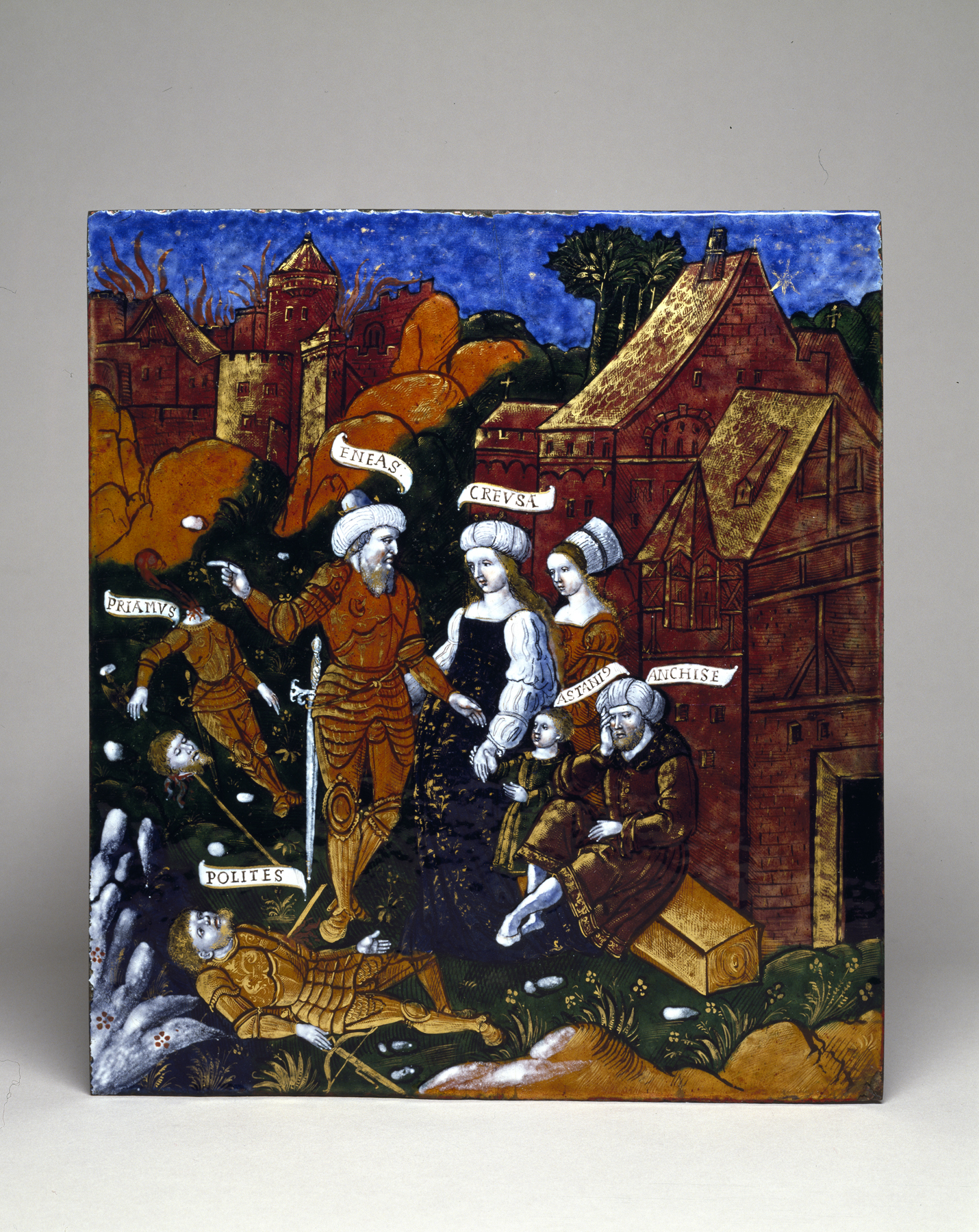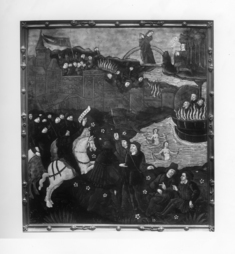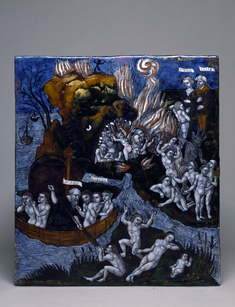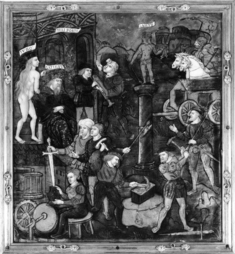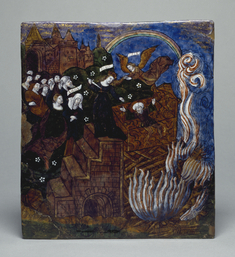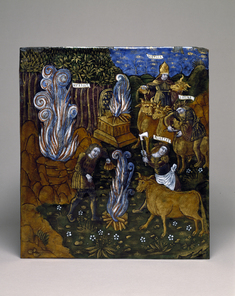Aeneas Entreats Anchises to Flee from Troy
(Renaissance Europe )
This plaque is part of a series whose designs were based upon the woodcut illustrations of an edition of Virgil, "Opera," edited by Sebastian Brant and printed by Johann Grüninger in Strasbourg, September 9, 1502 (22nd illustration, fol. 178). The same cuts appeared in an edition issued at Lyons in 1517 by Sacon.
The plaque depicts a scene from the "Aeneid," (IV, vv. 651-654). On the right Anchises is seated before a German half-timbered manor with overhanging bays. Aeneas points the way to safety to his family, Creüsa, Ascanius, and a maid. On the ground at the left, lie the corpse of Polites and the beheaded body of Priam. The city of Troy is ablaze in the background.
Provenance
Provenance (from the French provenir, 'to come from/forth') is the chronology of the ownership, custody, or location of a historical object. Learn more about provenance at the Walters.
William Williams Hope, Rushton Hall, Northamptonshire; William Williams Hope Sale, Christie's, London, June 14, 1849, no. 111; Octavius E. Coope, Brentwood, Essex, 1849, by purchase; Octavius E. Coope Sale, Christie's, London, May 3, 1910, lot 55; Jacques Seligmann, Paris, by purchase; Henry Walters, Baltimore, 1910, by purchase; Walters Art Museum, 1931, by bequest.
Geographies
France, Limoges (Place of Origin)
Measurements
H: 8 7/8 x W: 8 in. (22.6 x 20.3 cm)
Credit Line
Acquired by Henry Walters, 1910
Location in Museum
Not on view
Accession Number
In libraries, galleries, museums, and archives, an accession number is a unique identifier assigned to each object in the collection.
In libraries, galleries, museums, and archives, an accession number is a unique identifier assigned to each object in the collection.
44.58

